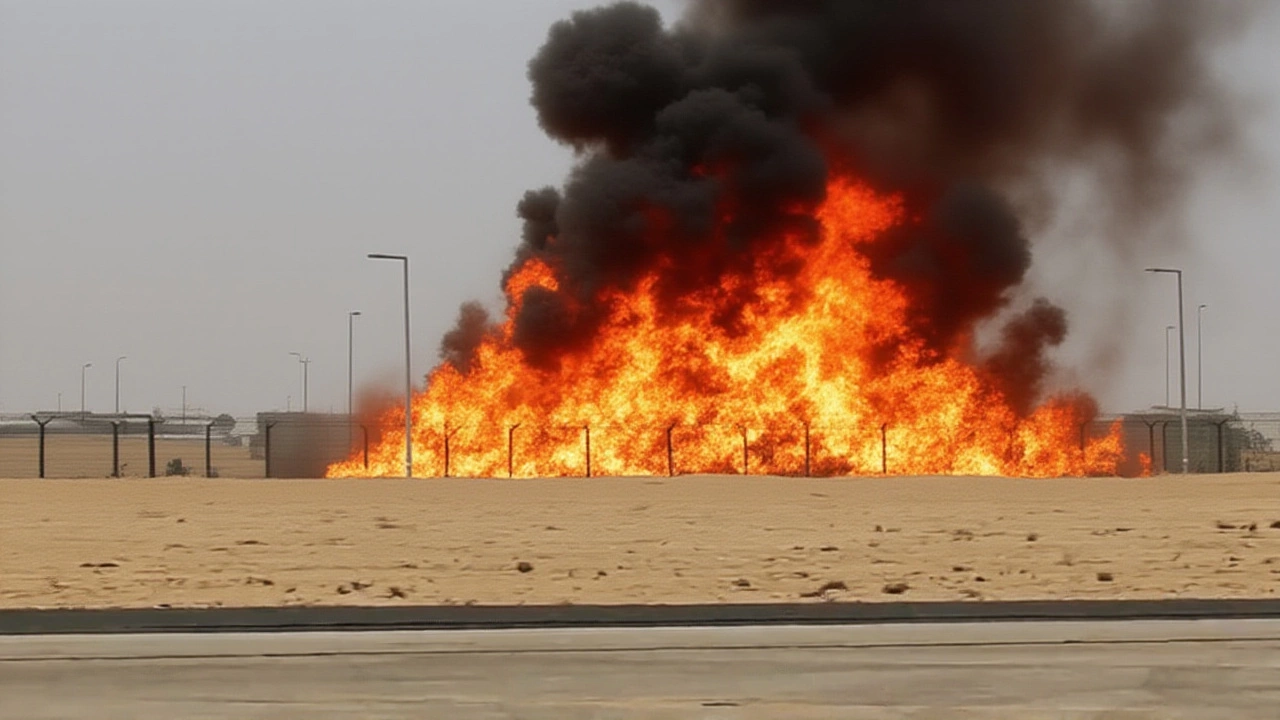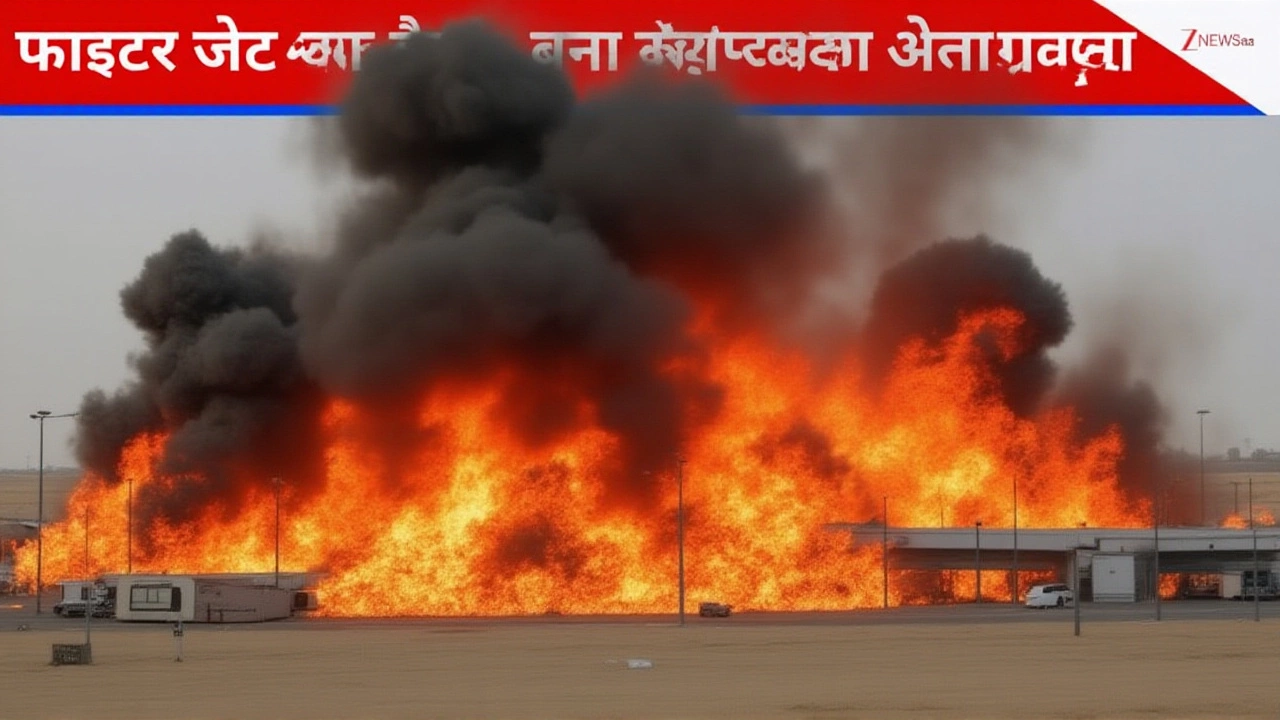At 2:10:30 PM on November 21, 2025, the roar of the Hindustan Aeronautics Ltd’s Dubai Air Show 2025Al Maktoum International Airport turned to silence. A Indian Air Force HAL Tejas Mk-1 fighter jet, performing a low-altitude aerobatic maneuver, suddenly pitched into a vertical dive—no warning, no ejection. By 2:11 PM, it was a fireball on the desert floor near Runway 12L. The pilot, Wing Commander Namansh Syal, 34, didn’t survive. The crash, witnessed by thousands, marked the first fatal accident in the Tejas program’s 23-year history.
What Happened in Those Final Seconds?
Eyewitnesses described the jet streaking low—under 500 feet—during a negative-G turn, a maneuver that pushes the pilot into the seat while the aircraft’s nose drops sharply. At the apex of the turn, the jet didn’t recover. Instead, it snapped into an unrecoverable stall, nosediving at near-vertical speed. No smoke, no engine sputter. Just silence, then impact. Emergency crews rushed to the scene as debris rained across a barren stretch of the airport’s perimeter. The aircraft, completely destroyed, left no black box intact. The IAF confirmed Syal was not able to eject—likely because the aircraft’s altitude was too low for the ejection seat to function safely.A Legacy in the Sky
Wing Commander Syal was no rookie. A veteran of over 1,200 flight hours, he’d flown combat missions in the Western Theater and trained dozens of junior pilots. He was selected for the Dubai Air Show because of his precision and calm under pressure. His last tweet, posted the morning of the crash, read: “Proud to represent the IAF on the global stage. Tejas isn’t just an aircraft—it’s a promise.” That promise, now shadowed by tragedy, has reignited debate over the risks of low-altitude aerobatics in military jets designed for combat, not air shows.The Dubai Air Show 2025, featuring 180 aircraft and 1,500 exhibitors, had been hailed as the most technologically advanced in its 30-year history. But the decision to resume flight demonstrations just two hours after the crash drew sharp criticism. Captain Taylor 'Fema' Hiester, a U.S. Air Force F-16 demonstration pilot, pulled out of his scheduled performance. “It’s a fine-tuned orchestra,” he told reporters. “When one instrument breaks, you don’t keep playing. You pause. You honor it.” His withdrawal was the first public rebuke from a foreign team at the event.

HAL’s Response and the Tejas Reputation
On November 24, Hindustan Aeronautics Ltd released a statement calling the crash “an isolated incident under exceptional circumstances.” The company emphasized that the Tejas has logged over 8,000 flight hours across the IAF and Indian Navy, with a 98% mission readiness rate. “This shouldn’t define the aircraft,” said a senior HAL engineer, speaking anonymously. “We’ve seen telemetry from hundreds of sorties. The systems performed flawlessly.”But experts note: telemetry doesn’t explain pilot inputs. The Tejas, while agile, is known for its high wing loading and sensitivity at low speeds. A negative-G turn at 400 feet requires perfect timing. One millisecond too late, and recovery becomes impossible. “It’s like driving a sports car at 120 mph on a wet road and trying to do a handbrake turn,” said retired IAF Group Captain Vikram Mehta. “You can do it—if you’ve trained for it. But the margin for error? It’s paper-thin.”
Why This Matters Beyond the IAF
The Tejas is India’s flagship fighter program—its answer to foreign imports like the Rafale and F-16. Over 150 units have been ordered, with plans to produce 300 by 2030. Export deals with Argentina, Vietnam, and the Philippines are in advanced talks. This crash could delay those deals. More importantly, it raises questions about whether aerobatic displays—once a symbol of national pride—are still appropriate for next-generation fighters.Compare this to the 2023 crash of an Israeli F-35 during a training flight. Israel grounded all F-35s for six weeks. The U.S. Air Force halted all Thunderbirds performances for three months after a 2022 crash. The Dubai Air Show’s quick return to normalcy stands in stark contrast.

What Comes Next?
The IAF’s court of inquiry, led by Air Marshal Rajiv Singh, is expected to take 90 days. Preliminary findings will be shared with HAL and the UAE’s Civil Aviation Authority. Investigators are focusing on three areas: pilot workload during the final sequence, potential engine flameout under negative-G conditions, and whether the aircraft’s flight control software responded correctly to extreme inputs. No evidence of mechanical failure has been found—but that doesn’t mean it didn’t happen.Meanwhile, Syal’s family has requested privacy. The IAF has announced a posthumous award for valor and will name a new training wing after him. His final flight, though tragic, will not be forgotten.
Frequently Asked Questions
Was the Tejas jet unsafe for aerobatic displays?
The Tejas is certified for combat, not air show maneuvers. While it’s highly agile, its design prioritizes speed and weapon systems over low-altitude stability. Aerobatic teams typically use jets like the Suryakiran (Hawk) or F-16s with enhanced control systems. The Tejas was never intended for such displays, making this performance unusually risky.
Why didn’t Wing Commander Syal eject?
Ejection seats require a minimum altitude—usually above 200 feet—to deploy safely. The Tejas was below 150 feet when it began its dive. Even if Syal initiated ejection at the first sign of trouble, the seat wouldn’t have had time to clear the aircraft before impact. The system worked as designed; the altitude simply didn’t allow for survival.
Has this happened before with the Tejas?
There have been two non-fatal incidents since 2002: one during ground testing in 2009 and another during a training flight in 2018. Both involved minor system glitches and resulted in safe landings. This is the first fatality and the first time a Tejas has been destroyed in flight. The program’s safety record remains strong overall, but this event is unprecedented.
How will this affect India’s defense exports?
Potential buyers like Argentina and Vietnam are closely monitoring the inquiry. While HAL insists the jet’s combat performance is unaffected, international buyers prioritize reliability. If the investigation finds pilot error, exports may continue. If it reveals a design flaw, delays are likely. The Tejas’ success hinges on perception—and this crash has shaken confidence.
Why did Dubai Air Show organizers continue flying after the crash?
Organizers cited logistical and contractual obligations, with many international teams already in position. But critics argue it showed a lack of respect for the fallen pilot and the gravity of the situation. Unlike other global air shows, Dubai’s organizers didn’t pause for a moment of silence or delay the schedule—something that drew international criticism from veteran pilots and safety advocates.
What changes might come from this tragedy?
The IAF may ban Tejas from future aerobatic displays, restricting it to static exhibits. There could be new altitude minimums for all fighter jet demonstrations—perhaps 1,000 feet minimum for jets with high wing loading. And HAL may update flight control software to prevent negative-G maneuvers below 500 feet. This crash won’t stop the Tejas program—but it will change how it’s shown to the world.
